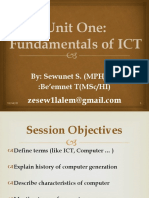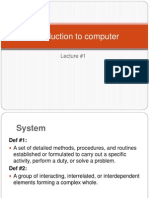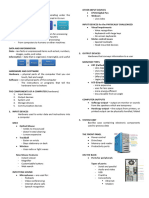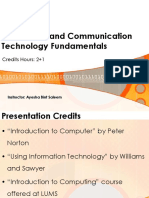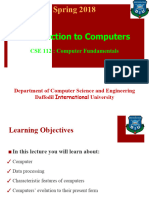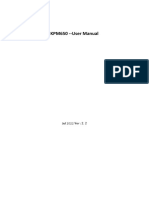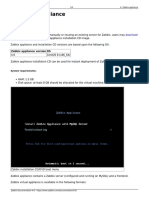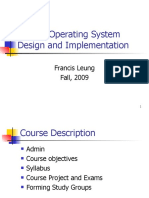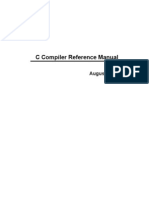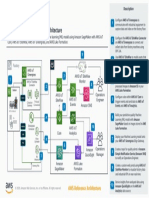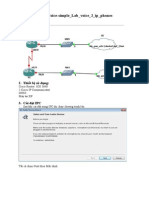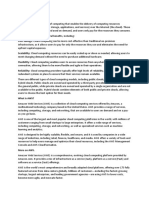0% found this document useful (0 votes)
84 views27 pagesIT101 Lecture 02 Introduction To Computer II
This document discusses the different generations of computers from first to fifth generation. It describes the key features of each generation including the switching circuits used and improvements in size, speed, reliability and programming capabilities. It also summarizes different types of computers like supercomputers, mainframes, minicomputers, microcomputers and workstations. Finally, it covers basic computer concepts like binary form, memory hierarchy, operating systems, and using a computer through the desktop, windows and mouse.
Uploaded by
graceyohana4l329Copyright
© © All Rights Reserved
We take content rights seriously. If you suspect this is your content, claim it here.
Available Formats
Download as PDF, TXT or read online on Scribd
0% found this document useful (0 votes)
84 views27 pagesIT101 Lecture 02 Introduction To Computer II
This document discusses the different generations of computers from first to fifth generation. It describes the key features of each generation including the switching circuits used and improvements in size, speed, reliability and programming capabilities. It also summarizes different types of computers like supercomputers, mainframes, minicomputers, microcomputers and workstations. Finally, it covers basic computer concepts like binary form, memory hierarchy, operating systems, and using a computer through the desktop, windows and mouse.
Uploaded by
graceyohana4l329Copyright
© © All Rights Reserved
We take content rights seriously. If you suspect this is your content, claim it here.
Available Formats
Download as PDF, TXT or read online on Scribd
/ 27




















